 by "ttyymmnn" (ttyymmnn)
by "ttyymmnn" (ttyymmnn)
Published 08/15/2017 at 12:35
 by "ttyymmnn" (ttyymmnn)
by "ttyymmnn" (ttyymmnn)
Published 08/15/2017 at 12:35
Tags: Planelopnik
; planelopnik history
STARS: 9
Welcome to This Date in Aviation History , highlighting milestones, important historical events and people in aviation and spaceflight from August 12 through August 15.
!!! UNKNOWN CONTENT TYPE !!!
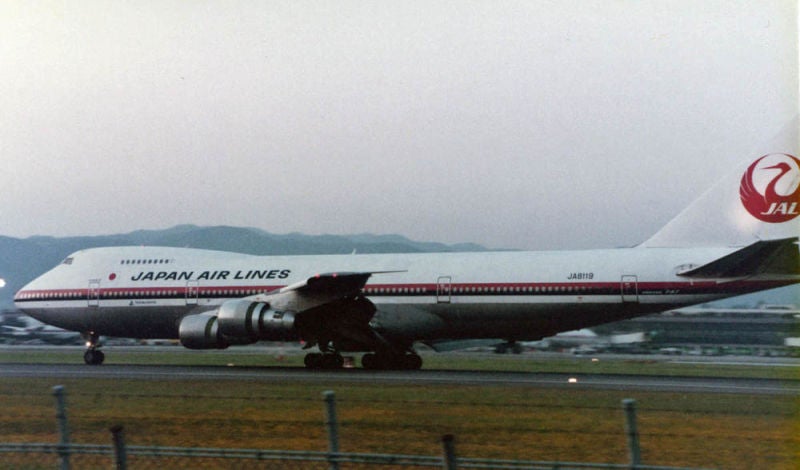
August 12, 1985 – The crash of Japan Airlines Flight 123. The age of aircraft cabin pressurization began in 1938 with the Boeing 307 Stratoliner , and today, modern airliners use bleed air from the engines at the compressor stage so that aircraft flying 35,000 feet above the ground are pressurized to maintain the same air pressure inside the cabin as if it were flying at no more than 8,000 feet (the FAA mandates a maximum of 8,000 feet, while most airliners maintain 6000-7000 feet, and some business jets can maintain sea-level pressure). But pumping that much air into the fuselage puts enormous stress on the aircraft, and repeated compressions and decompressions can weaken an aircraft over time. This lesson was tragically learned when a series of fatal, explosive decompressions plagued the world’s first jet-powered airliner, the de Havilland Comet , in the 1950s. For the enjoyment of the flying public, de Havilland fitted the Comet with large, rectangular windows. After the crashes, investigators discovered that the cyclical compression and decompression of the aircraft caused metal fatigue and cracks around the large windows, which then led to fatal aircraft breakups. The Comet was redesigned to use oval windows, which then became an industry standard. Aside from the windows, another critical component of aircraft pressurization is the rear pressure bulkhead, a circular, dome-shaped structure that closes off the aft end of the passenger compartment tube from the rest of the empennage . This bulkhead must be regularly and rigorously inspected and, if damaged, must be repaired precisely to the standards set by the manufacturer. But that was not the case with Japan Airlines Flight 123, a Boeing 747SR (JA8119) that had taken off from Haneda Airport in Tokyo for a short, one-hour flight to Osaka International Airport. Twelve minutes after takeoff, the aft pressure bulkhead ruptured, leading to a rapid depressurization of the cabin and the loss of most of the vertical stabilizer. When the stabilizer broke free, it ruptured all four hydraulic lines, leaving the plane almost completely uncontrollable. Captain Masami Takahama, a veteran 747 pilot with over 12,000 hours of flight time (4,850 in the 747), along with his flight crew, managed to regain some measure control using engine throttle inputs. Their skilled piloting kept the plane in the air for 32 minutes, long enough for many of the passengers to write farewell notes to their families. When the plane eventually crashed near Mount Osutaka, 505 passengers and crew were killed, making it the deadliest single-aircraft accident in history. Four passengers survived, and it is surmised that more may have lived had the Japanese government acted more quickly to reach the crash site.

The cause of the bulkhead rupture was traced to an improper repair following a tail strike seven years earlier which had damaged the bulkhead. Rather than provide a redundant overlap of the bulkhead sections as dictated by Boeing, technicians in Japan instead used two separate splice plates, leaving the bulkhead dangerously weak. Even though the aircraft had gone through over 12,000 pressurization cycles before the crash, the bulkhead finally burst on that fateful day. Though JAL officially admitted no liability, they agreed to pay $7.6 million to the families of the victims, and a maintenance manager committed suicide in atonement for his error. JAL no longer uses the number 123 for any flight, and has changed the flight number on that particular route to 127.
(747 Photo by Harcmac60 via
Wikimedia Commons
; bulkhead repair illustration by Phoenix7777 via
Wikimedia Commons
)
!!! UNKNOWN CONTENT TYPE !!!
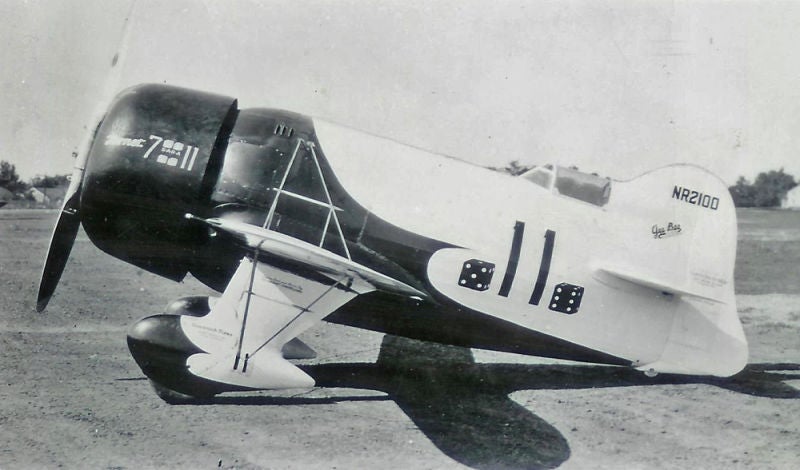
August 13, 1932 – The first flight of the Gee Bee Model R. Though aviation came into the public eye during the First World War, most people in the immediate post-war era still saw airplanes solely as part of the military. But soon, barnstormers were crisscrossing the country, dazzling spectators with feats of skill and daring, and the airplane firmly established itself in the imagination of the world. The interwar period became known as the Golden Age of Aviation , and rapid technological developments in aircraft design left fabric-covered frames behind and replaced them with metal monoplanes of increasing size, strength and speed. And just as the first automobile drivers pitted themselves against each other in contests of speed, airplane races became all the rage. Contests of speed such as the the Schneider Trophy drew entrants from around the world, and helped spur ever more experimentation and innovation. Starting in 1920, the National Air Races were created by publisher Ralph Pulitzer , which included the Thompson Trophy races, sponsored by Thompson Products (the company that would eventually become TRW ). These contests of speed and piloting skill pitted aircraft and pilots in closed-course races around pylons, and the Bendix Trophy arose to recognize the fastest time between two points. In the quest for the fastest aircraft possible, Granville Brothers Aircraft built a series of powerful racers beginning with the Model X Sportster in 1930. All the aircraft featured low cockpits, relatively short wings, and enormous radial engines. The planes were definitely fast, but they were also notoriously difficult to fly. Most of them crashed, claiming the life a number of pilots, including Zantford Granville, one of the five Granville brothers. Undeterred, the remaining Granville brothers forged ahead in 1931 with the Gee Bee (as in GB, or Granville Brothers) Model Z, which was essentially a Pratt & Whitney R-985 Wasp Junior supercharged radial engine with wings. The stubby design was fast, winning the Thompson Trophy in 1932, but with its stubby wings and minimal vertical stabilizer it was also extremely difficult to fly, and a crash while attempting a world speed record killed pilot Lowell Bayles. Though the crash caused significant damage to the reputation of the Granville Brothers, they followed the Model Z with the Model R, perhaps the best known of the Gee Bee aircraft.
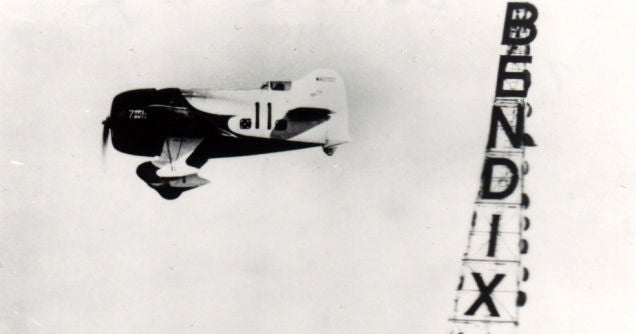
The Model R was 2 feet longer, and featured a refined fuselage shape that its designers hoped would make it more aerodynamic. The wings were lengthened slightly, but the cockpit was placed even further back on the diminutive fuselage, and it was driven by a still more powerful
Pratt & Whitney R-1340 Wasp
radial engine providing 800 hp. The Model R continued to be a very difficult airplane to fly, even in the hands of experienced aviators. But the new design, with a top speed of nearly 300 mph, also allowed the pilot to lap the racing pylons in a knife-edge turn without losing altitude and, in the hands of famed aviator
Jimmy Doolittle,
the Model R won the Thompson Trophy in 1932. Doolittle retired from air racing after his win, out went on to a storied career in the US Army Air Forces, where he commanded the audacious
raid
on Tokyo in April 1942. None of the original Gee Bee aircraft exist today, but some replicas are still flown by brave pilots in the quest for speed.
(Aircraft photo author unknown; Doolittle photo via
Smithsonian Institution
)
!!! UNKNOWN CONTENT TYPE !!!
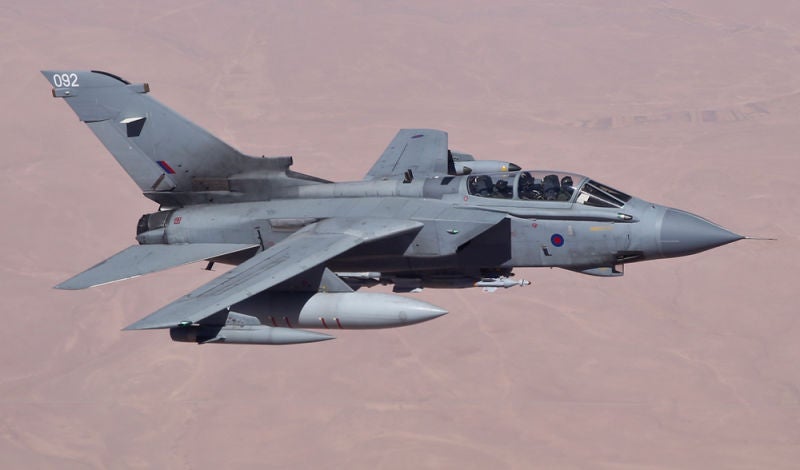
August 14, 1974 – The first flight of the Panavia Tornado. In the history of jet fighter development, there have been various schools of thought on how best to employ the warplanes. In WWI, aircraft started out purely as observation planes, but then transitioned to dedicated fighter aircraft. By WWII, there were dedicated fighters, but also dedicated ground attack aircraft, night fighters , and interceptors . These basic categories continued into the jet age, but by the 1960s, designers began to investigate the concept of the multirole fighter, one plane that could do the job of several different aircraft, thus eliminating the need to develop and maintain multiple types. At the same time, designers in the United Kingdom began investigating the benefits of a variable geometry fighter aircraft, one that could sweep the wings out for lower speed flight while sweeping them back for high speed flight. Various European allies were all working towards the same goal of a new multirole fighter, and it soon became apparent that working together would be more efficient. In 1960, four nations—the United Kingdom, Germany, Italy and the Netherlands—agreed to form a multinational company, called Panavia Aircraft GmbH , to work together on the development of a Multirole Combat Aircraft (MRCA) capable of carrying out tactical strike missions, reconnaissance, air defense, and maritime patrol and attack. Britain was hoping to replace the Avro Vulcan and the Blackburn Buccaneer , while West Germany, the Netherlands, Belgium, Italy and Canada were looking for a replacement for the problematic Lockheed F-104 Starfighter . After the Netherlands pulled out, the consortium decided on the Panavia 200, a swing-wing aircraft that would be developed into the Tornado.
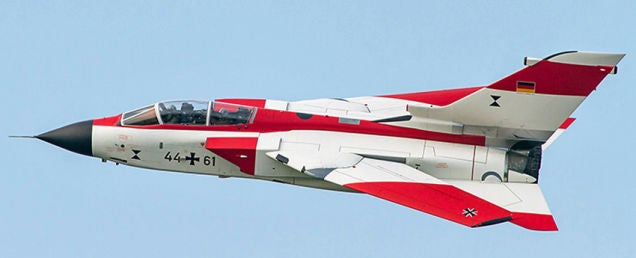
The resulting design featured wings that swept between 25 and 67 degrees with hard points under the wings that swiveled as the wing swept. The Tornado is powered by a pair of Turbo-Union RB199 afterburning turbofans which provide a top speed of Mach 2.2, is armed with a single 27 mm Mauser BK-27 cannon, and has the ability to carry 19,800 pounds of external bombs and missiles. A tandem cockpit, with pilot and navigator/weapons officer, was included to reduce pilot workload. The flight of the first prototype took place in West Germany in 1974, and the Tornado entered service with the Luftwaffe in July 1979, eventually forming the backbone of the aerial attack and defense air forces of Britain, Germany, Italy and Saudi Arabia. German Tornados took part in the Bosnian War (1992-1995), the first combat operations by the Luftwaffe since WWII. British and Italian Tornados saw action as part of the NATO force in Kosovo , and the RAF flew scores of missions with the Tornado during the Gulf War , eventually being complemented by older Blackburn Buccaneers which were used as target definition aircraft. A total of 992 Tornados of all variants were built by the time production ended in 1998, and continuing upgrades will ensure continued service for many years to come. (Photo by Cpl Neil Bryden, Royal Air Force; prototype Tornado photo by Panavia via hjak.se )
!!! UNKNOWN CONTENT TYPE !!!
!!! UNKNOWN CONTENT TYPE !!!
!!! UNKNOWN CONTENT TYPE !!!

August 12, 1960 – The launch of Echo 1A, an experimental passive communications satellite and the first of two enormous, metal-coated balloons placed into low Earth orbit. The balloons acted as passive reflectors of microwave signals that could be bounced off the balloon and back to Earth. The launch of Echo 1 on May 13, 1960 fell into the Atlantic Ocean when a stage of the newly-designed Thor-Delta launch system failed, but the launch of Echo 1A was successful, and a microwave transmission from the Jet Propulsion Laboratory in California was received at Bell Laboratories in New Jersey. Echo 1 was followed four years later by Echo 2, which was 35 feet larger, and was placed in a polar orbit that was visible from Earth with the naked eye. Echo 1A burned up in Earth’s atmosphere in 1968, followed by Echo 2 a year later. (NASA photo)
!!! UNKNOWN CONTENT TYPE !!!
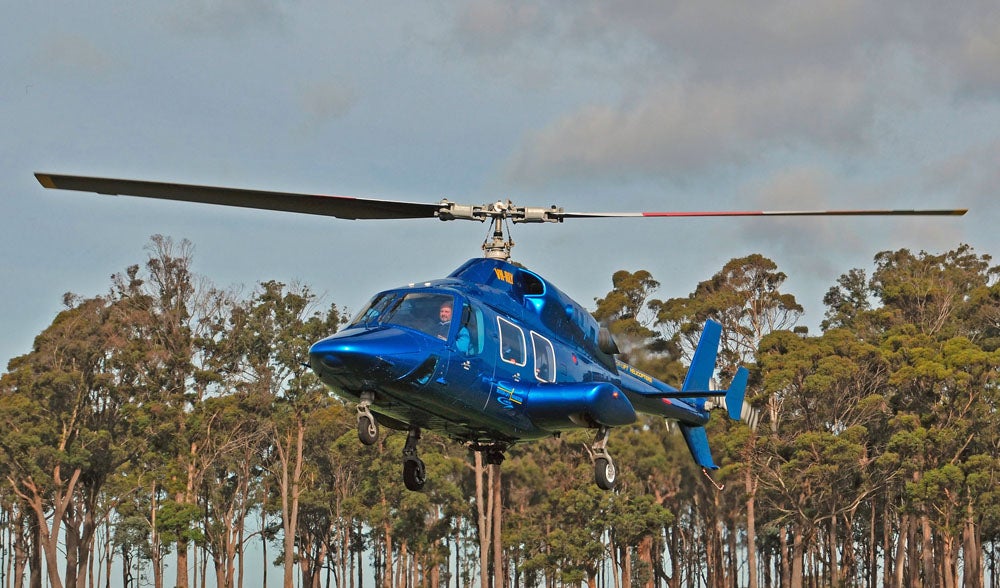
August 13, 1976 – The first flight of the Bell 222, a light executive and utility helicopter and the first of its class to have two turbine engines. The 222 also features retractable landing gear housed in sponsons on the sides of the fuselage and an advanced vibration reduction system. A total of 199 were built from 1980-1991, and it was developed into a number of variants, including the 222B configuration with a larger main rotor, and the 222UT (Utility Twin), which replaced the landing gear with fixed skids. In 1991, Bell upgraded the 222 to the 230, which had more powerful Allison 250 turboshaft engines, and later with the still larger and more powerful Bell 430. A cosmetically modified Bell 222 appeared as the titular helicopter in the television series Airwolf that ran from 1984-1987. (Photo by Peripitus via Wikimedia Commons )
!!! UNKNOWN CONTENT TYPE !!!
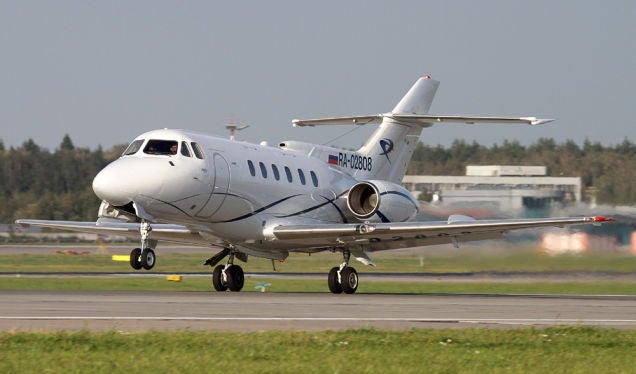
August 13, 1962 – The first flight of the British Aerospace 125,
a twine-engine corporate jet originally developed by
de Havilland
as the DH.125 Jet Dragon and designed as a replacement for the
de Havilland Dove
. Following the purchase of de Havilland by
Hawker Siddeley
in 1960, the 125 entered production as the Hawker Siddeley HS.125, while later models were known as the Hawker 800. One of the earliest business jets, the 125 found a wide open market for executives and government agencies, including the US Air Force, where it was known as the C-29, and the Royal Air Force, who flew it as a navigation trainer designated the Hawker Siddeley Dominie T1. A 125 was also owned by Formula 1 driver
Ayrton Senna
. More than 1,600 aircraft were produced from 1962-2013.
(Photo by Aktug Ates via
Wikimedia Commons
)
!!! UNKNOWN CONTENT TYPE !!!
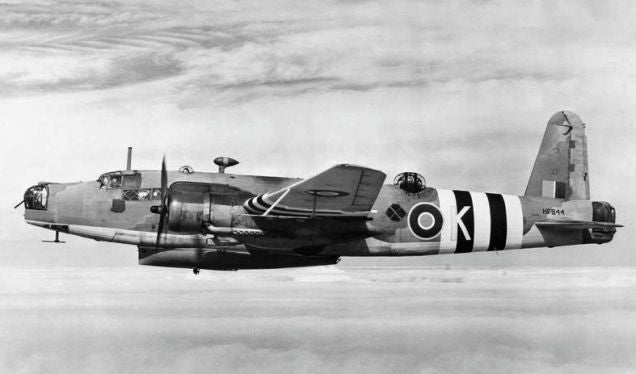
August 13, 1939 – The first flight of the Vickers Warwick,
an aircraft designed and built by
Vickers-Armstrongs
originally as a bomber to complement the
Vickers Wellington
. The Warwick went through a long and difficult development process, and was ultimately deemed to be redundant by the time it entered service in 1942, resulting in only 16 being delivered as bombers. The rest of the nearly 850 aircraft produced still found roles to fill, serving as transports, maritime reconnaissance and anti-submarine patrol, and for air-sea rescue. Most of the production Warwicks were fitted with a deployable lifeboat (see photo) which was dropped to the crews of downed bombers over the English Channel or North Sea.
(Photo author unknown)
!!! UNKNOWN CONTENT TYPE !!!
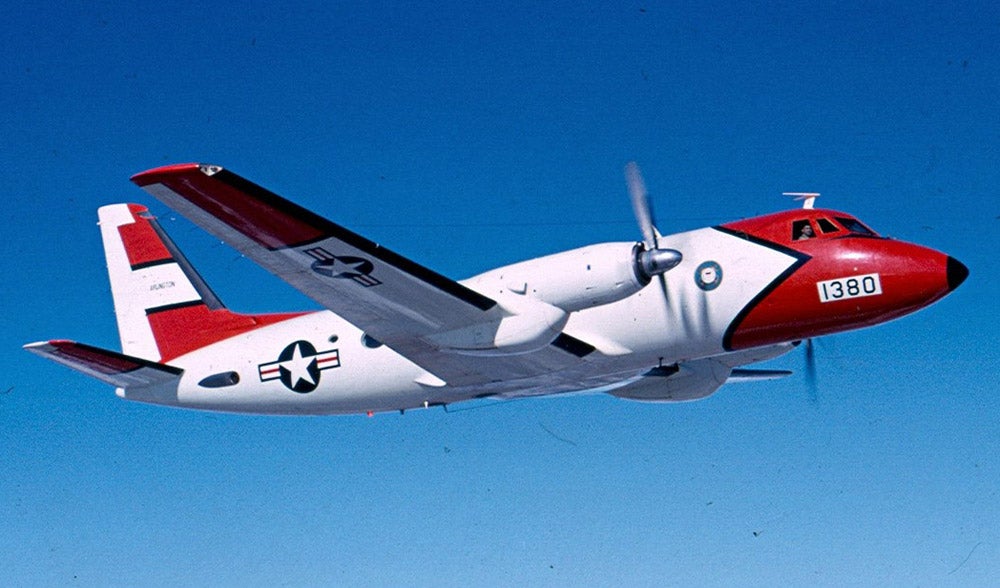
August 14, 1958 – The first flight of the Grumman Gulfstream I. Grumman’s work on the development of a turboprop-powerd executive transport began with discussions about converting the Grumman Widgeon or Grumman TF-1 Trader for transport duties. They eventually settled on an entirely new design which became the Gulfstream, a low cantilever wing monoplane plead by two Rolls-Royce Dart turboprops. Depending on the configuration the Gulfstream can accommodate from 10-24 passengers, and it became a popular commuter airliner and was also adopted by the US military as the C-4. A modified version known as the TC-4C was used for navigator training. A handful remain in operation today, mostly with charter airline Phoenix Air. A total of 200 were built from 1959-1969. (US Coast Guard photo)
!!! UNKNOWN CONTENT TYPE !!!
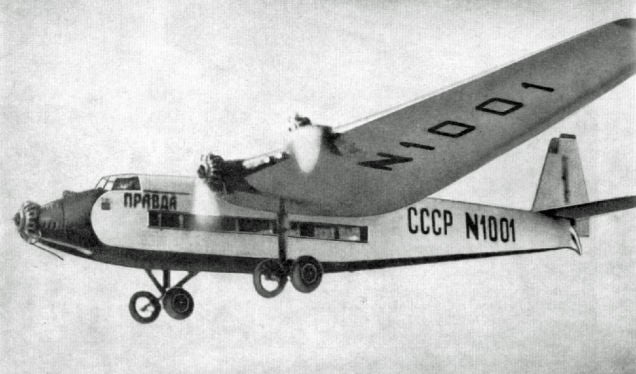
August 14, 1933 – The first flight of the Tupolev ANT-14,
the first all-metal aircraft produced in Russia and the flagship of the Soviet propaganda squadron. The ANT-14 was an enlarged version of the three-engine
Tupolev ANT-9
, and was powered by five
Gnome-Rhône Jupiter 9AKX
radial engines
, two on each wing and one in the nose. Capable of carrying 36 passengers, the ANT-14 never entered production, as there was no need at the time for such a large passenger aircraft. Consequently, it was named
Pravda
(Truth) and carried out sightseeing flights over the Russian capital of Moscow, carrying over 40,000 passengers before it was retired in 1941.
(Ukrainian Government photo)
!!! UNKNOWN CONTENT TYPE !!!
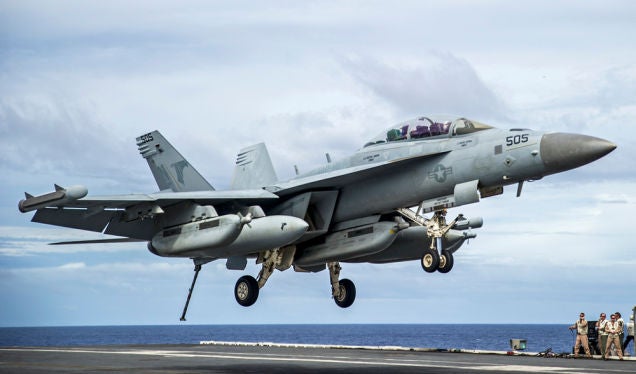
August 15, 2006 – The first flight of the Boeing EA-18G Growler,
a carrier-based electronic warfare aircraft developed from the
Boeing F/A-18F Super Hornet
as a replacement for the Northrop
Grumman EA-6B Prowler
. Development of the Growler began with an F/A-18F two-seat Super Hornet fitted with the
ALQ-99
electronic warfare system, and followin the success of that aircraft, the US Navy ordered the EA-18G into production in October 2004. The Growler is capable of flying in consort with F/A-18 attack aircraft in all phases of combat missions, providing electronic suppression of enemy radar and the ability to destroy enemy radar sites with radar-guided missiles. The Growler entered service in 2008, and currently serves with both the US Navy and Royal Australian Air Force.
(US Navy photo)
!!! UNKNOWN CONTENT TYPE !!!

August 15, 1944 – The first aerial victory is scored by a jet-powered fighter. Turbojet engines were developed separately in Germany and Great Britain before WWII, but it was the German Luftwaffe who fielded the first operational jet fighter with the Messerschmitt Me 262 Schwalbe ( Swallow ). The first missions flown by the 262 took place in April 1944, and they were flown primarily against large formations of American bombers taking part in daylight bombing raids. As a member of Jagdgeschwader 7 , the world’s first operational all-jet squadron, Feldwebel Helmut Lennartz shot down a Boeing B-17 Flying Fortress , one of a total of eight victories he scored flying the Me 262, and Schwalbe pilots claimed a total of 542 victories against Allied aircraft by the end of the war. (Illustration author unknown)
!!! UNKNOWN CONTENT TYPE !!!
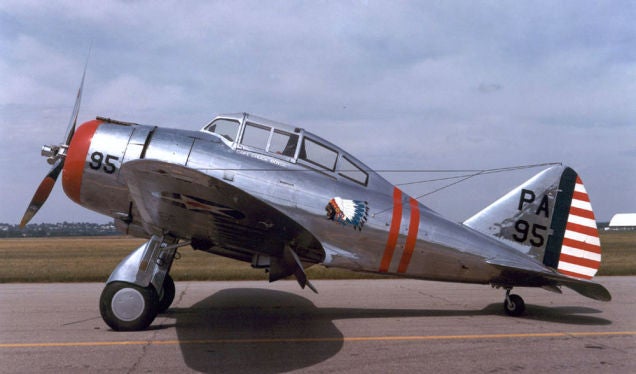
August 15, 1935 – The first flight of the Seversky P-35,
an all-metal monoplane fighter designed for the US Army Air Corps by
Alexander Kartveli
, who later designed the
P-47 Thunderbolt
after Seversky became
Republic Aviation
. The P-35 featured semi-retractable landing gear, a feature that would hamper its performance against more modern designs. It was originally armed with one .30 caliber and one .50 caliber machine gun, and thirty 10-pound bombs could be carried on under-wing hardpoints. Following the outbreak of WWII, the P-35 was upgraded to the P-35A, with a more powerful
Pratt & Whitney R-1830 Twin Wasp
engine and standardized armament, but it was outclassed by the Japanese fighters it faced and was quickly retired. Just under 200 were built.
(US Air Force photo)
!!! UNKNOWN CONTENT TYPE !!!
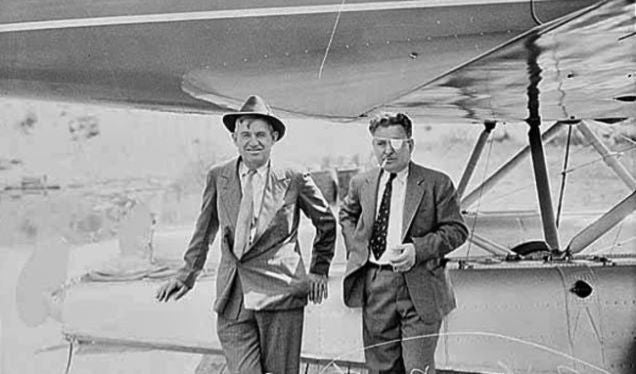
August 5, 1935 – The death of Wiley Post and Will Rogers. Born on November 22, 1898 in Van Zandt County, Texas, Post was one of the giants of the Golden Age of Aviation and began his flying career as a parachutist for a traveling circus before he lost his left eye in an oilfield accident in 1926, and the money he received from the settlement allowed him to purchase his first airplane. Post eventually became the first person to fly solo around the world in 1933, and also experimented with the first pressure suit for pilots. He became good friends with famed American humorist Will Rogers , and they would often travel together, with Post flying while Rogers worked at his typewriter. After becoming lost during a flight from Fairbanks to Point Barrow, Alaska in an experimental aircraft Post had cobbled together from parts scavenged from a Lockheed Explorer and a Lockheed Orion , the pair crashed while taking off after landing to ask for directions. (Photo author unknown)
!!! UNKNOWN CONTENT TYPE !!!
!!! UNKNOWN CONTENT TYPE !!!
!!! UNKNOWN CONTENT TYPE !!!
!!! UNKNOWN CONTENT TYPE !!!
!!! UNKNOWN CONTENT TYPE !!!
!!! UNKNOWN CONTENT TYPE !!!
!!! UNKNOWN CONTENT TYPE !!!
If you enjoy these Aviation History posts, please let me know in the comments. And if you missed any of the past articles, you can find them all at Planelopnik History . You can also find more stories about aviation and aviators at Wingspan and Planes You’ve (Probably) Never Heard Of .
!!! UNKNOWN CONTENT TYPE !!!
 "HammerheadFistpunch" (hammerheadfistpunch)
"HammerheadFistpunch" (hammerheadfistpunch)
08/15/2017 at 12:47, STARS: 0
I didn’t know about the echo program, thats a clever solution. I’ve heard about moon bounce and other reflective range enhancers in the HAM community but I didn’t think about passive LEO reflectors. Makes a lot of sense...other than the fact that today a micro satellite could do the same thing with greater clarity and lower cost.
 "RamblinRover Luxury-Yacht" (ramblininexile)
"RamblinRover Luxury-Yacht" (ramblininexile)
08/15/2017 at 12:49, STARS: 1
Important lesson to be learned from the Post/Rogers crash: Asking for directions KILLS. So many of we men have tried to explain this...
Humor aside, neither man is a household name these days, and that’s a shame.
I believe the Warwick is one of the Vickers platforms with a Barnes Wallis geodetic frame - sure looks like it with the visible spars through the window.
If you’re not aware, the film
The Rocketeer
featured a Gee Bee in an important role, and I’d really love to know what happened to the reproductions after filming was complete.
 "WilliamsSW" (williamssw)
"WilliamsSW" (williamssw)
08/15/2017 at 13:08, STARS: 1
The Gee Bees amaze me - they just don’t look like they should be able to fly at all.
The ANT-14 sure looks a lot like a Ford Tri-Motor with extra engines (and bigger, of course).
Finally, it’s eery to me that you can always (it seems) find a photo online of the actual accident aircraft, rather than just a similar one - even one that crashed 32 years ago.

08/15/2017 at 13:08, STARS: 1
That was a reproduction GB-Z in The Rocketeer , and it’s on display at the Museum of Flight at Boeing Field.
 "victor" (victor)
"victor" (victor)
08/15/2017 at 13:12, STARS: 0
This is an excellent post and I would read this all the time. I think the JAL 123 flight was particularly horrible because it was in max-capacity single class domestic config.

08/15/2017 at 13:13, STARS: 1
Aw yeah, Airwolf opening:
!!! UNKNOWN CONTENT TYPE !!!
 "Yowen - not necessarily not spaghetti and meatballs" (yowen)
"Yowen - not necessarily not spaghetti and meatballs" (yowen)
08/15/2017 at 13:27, STARS: 0
Having lived in the Netherlands for 14 years, I was interested in their involvement with Panavia, it seems according to Wikipedia they pulled out of the partnership in 1969 along with Canada “for financial reasons”. Since they weren’t mentioned later on in your piece on the Tornado, I found it odd that they would have been involved in development but then never had any notable deployment, but this explains it!
edit: another wikipedia has the Netherlands pulling out in 1970
https://en.wikipedia.org/wiki/Panavia_Tornado
As always, thanks for your aviation history articles, they are always fascinating! I’m going to keep reading now :D
 "ttyymmnn" (ttyymmnn)
"ttyymmnn" (ttyymmnn)
08/15/2017 at 15:12, STARS: 0
Yes, I should have mentioned that the Netherlands bailed out of the arrangement. Thanks for reading!
 "ttyymmnn" (ttyymmnn)
"ttyymmnn" (ttyymmnn)
08/15/2017 at 15:13, STARS: 0
I watched the hell out of that show back in the day.
 "ttyymmnn" (ttyymmnn)
"ttyymmnn" (ttyymmnn)
08/15/2017 at 15:14, STARS: 1
JAL 123 is also tragic because it was completely avoidable. Thanks for reading. These posts drop every Tuesday and Friday. And I’m also trying to do a weekly feature on Wednesdays of obscure aircraft.
 "ttyymmnn" (ttyymmnn)
"ttyymmnn" (ttyymmnn)
08/15/2017 at 15:18, STARS: 0
The Gee Bees barely flew as it was! Now, if they had modern fly-by-wire and computerized stability, they would be just fine.
Well, Ford ripped off Fokker, and Russia has a long history of ripping everybody else off. Of course, back then, there were only so many ways to skin a cat. You went with what worked.
I always try to use a photo of the actual aircraft, and always going out in the credits if the photo is not the accident aircraft. The fact that there are photos of the actual aircraft is a testament to how many people have been photographing aircraft as a hobby and for how long. I do it myself, when I have the time. And there are a couple of names that keep popping up in the Wikimedia Commons. They must have amazing photo collections, some dating back 50 years or more.
 "ttyymmnn" (ttyymmnn)
"ttyymmnn" (ttyymmnn)
08/15/2017 at 15:21, STARS: 1
Wiley Post is by no means a household name, but he is certainly well known in aviation circles. His is one of the great names. Will Rogers should be more widely known.
Yes, the Warwick was a Barnes Wallis design. Damned brilliant, really.
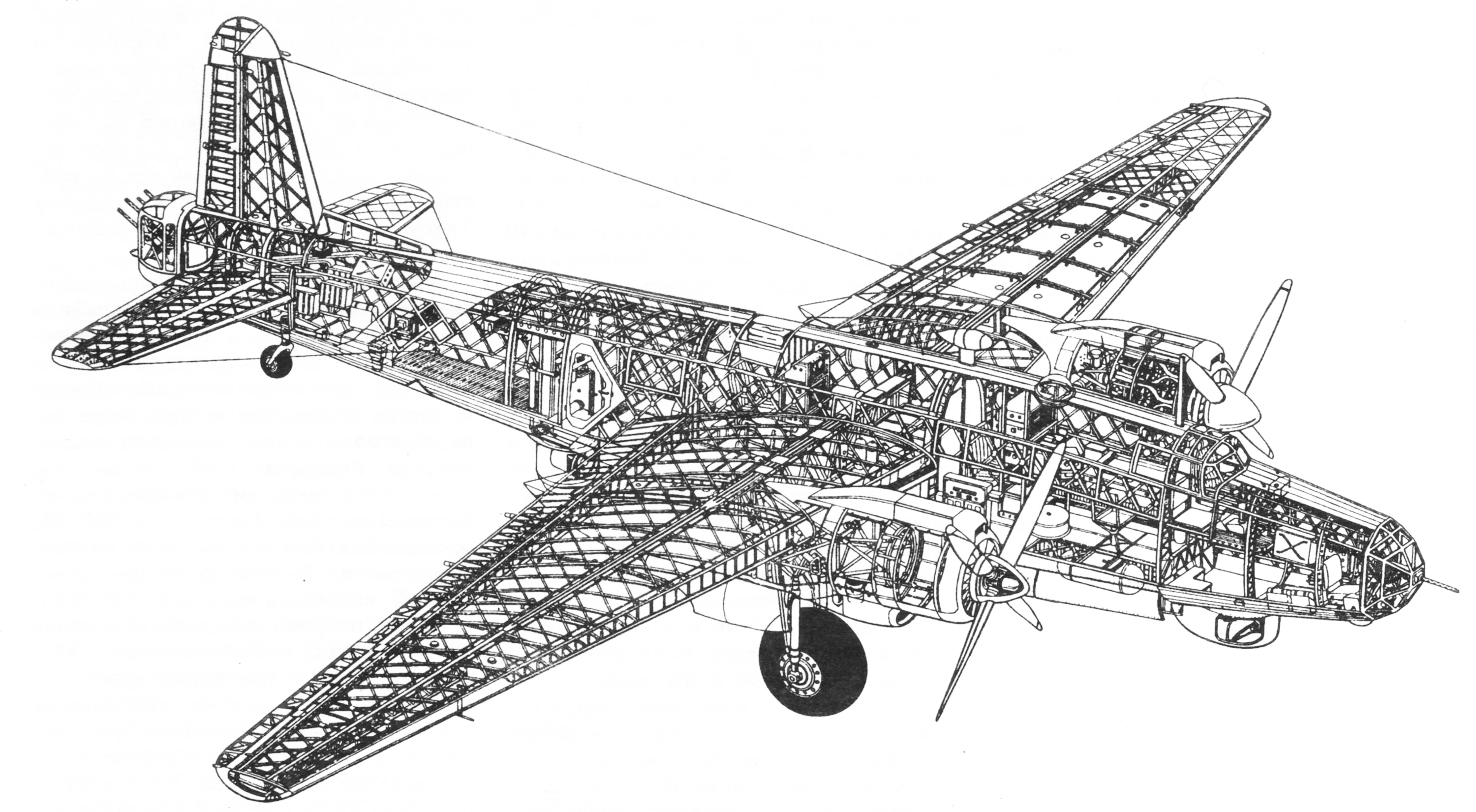
 "ttyymmnn" (ttyymmnn)
"ttyymmnn" (ttyymmnn)
08/15/2017 at 15:23, STARS: 0
As a kid, I marveled at that exact photo of Echo 1A. I remember staring at it, and wondering how it could be so damned big, even if I didn’t really understand what it was or how it worked. I think it’s fascinating to see some of the early ways of solving communications problems. Now we take satellites for granted.

08/15/2017 at 15:36, STARS: 0
I tried watching reruns on Spike (or maybe it was still TNN?) a while back. The show has not aged well.
 "ttyymmnn" (ttyymmnn)
"ttyymmnn" (ttyymmnn)
08/15/2017 at 15:52, STARS: 0
The show hasn’t aged well, and you have aged.
 "ttyymmnn" (ttyymmnn)
"ttyymmnn" (ttyymmnn)
08/15/2017 at 15:52, STARS: 0
The show hasn’t aged well, and you have aged.

08/15/2017 at 16:08, STARS: 1
!!! UNKNOWN CONTENT TYPE !!!
 "Yowen - not necessarily not spaghetti and meatballs" (yowen)
"Yowen - not necessarily not spaghetti and meatballs" (yowen)
08/15/2017 at 16:29, STARS: 0
no problem! It’s not terribly consequential to most, haha.
Your series also got me thinking, what’s the most produced air craft? I came up with the Cessna 172 with a run of 1956 to present and over 40k produced.
Based on the pictures below it looks like they kept the basic shape, but a lot changed over the years. It seems that had they decided in the 1980's after some major changes to call it a 173, or a 172B, or simply announce it as a new generation much like car manufacturers do, they would’ve lost their title that they currently hold.
But maybe their title is warranted, the similarities are striking, and I do know that development changes tend to happen much more slowly and gradually in air planes when compared to cars, since the whole dropping out of the sky due to a malfunction thing.
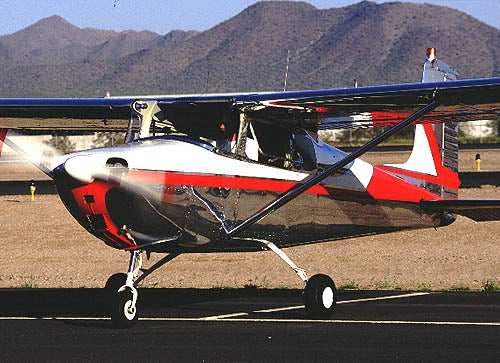

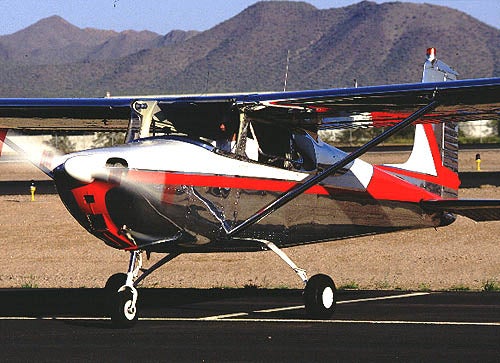
 "ttyymmnn" (ttyymmnn)
"ttyymmnn" (ttyymmnn)
08/15/2017 at 16:32, STARS: 0
Yup. The 172 by a significant margin. I find it interesting that 3 of the top 5 are civilian aircraft, and 2 of those are Cessnas.
https://en.wikipedia.org/wiki/List_of_most-produced_aircraft
 "ttyymmnn" (ttyymmnn)
"ttyymmnn" (ttyymmnn)
08/15/2017 at 16:34, STARS: 0
That’s brilliant.
 "victor" (victor)
"victor" (victor)
08/15/2017 at 16:36, STARS: 0
I’m obsessive over plane crashes. And I always also remember how similar JA123 was to the CI611 747-200 that crashed in the waters between TPE and HKG.
 "Yowen - not necessarily not spaghetti and meatballs" (yowen)
"Yowen - not necessarily not spaghetti and meatballs" (yowen)
08/15/2017 at 16:42, STARS: 1
Yup and the first non-US produced for civilian use is the Antonov AN-2, it does claim the longest production run of anything on the list.
So the US has that list pretty well dominated as far as Civilian stuff goes. 3 Cessna’s in the top 6.
I had also figured the 737 would be the first jet airliner on that list.
 "ttyymmnn" (ttyymmnn)
"ttyymmnn" (ttyymmnn)
08/15/2017 at 16:48, STARS: 1
Many years ago, I was flying as an unaccompanied minor and I was sitting behind two pilots in the passenger cabin. One of them was reading the newspaper about events from the past year (I was flying at Christmastime). The pilot with the paper turned to a very large photo of PSA 123 crashing in California, and I remember he leaned across the aisle and showed it to the other pilot. It made for an interesting tableau, those two uniformed pilots looking at that photo.
I wouldn’t say that I obsess about crashes, but I do try to find out as much as I can about them. Short of a single act like a terrorist bomb, you can usually look at the circumstances and make a pretty good guess as to the cause. I’m also not at all afraid of flying. I like to believe that the pilots are in no more of a hurry to die as I am (except maybe for Andreas Lubitz; that was just totally f**ked up). But I do find myself remembering details of various crashes.
 "BaconSandwich is tasty." (baconsandwich)
"BaconSandwich is tasty." (baconsandwich)
08/15/2017 at 23:19, STARS: 0
I thought I recall seeing a photo of a Warwick on Wikipedia showing some pretty heavy tail damage. Because the way the frame structure was, it seemed like it was capable of taking some pretty heavy damage without entirely failing.
Although maybe that was another plane I was thinking of. I can’t seem to find the picture now.
Either way, I suspect part of the reason they were less popular is because the higher amount of labour needed to produce them.
 "ttyymmnn" (ttyymmnn)
"ttyymmnn" (ttyymmnn)
08/15/2017 at 23:33, STARS: 1

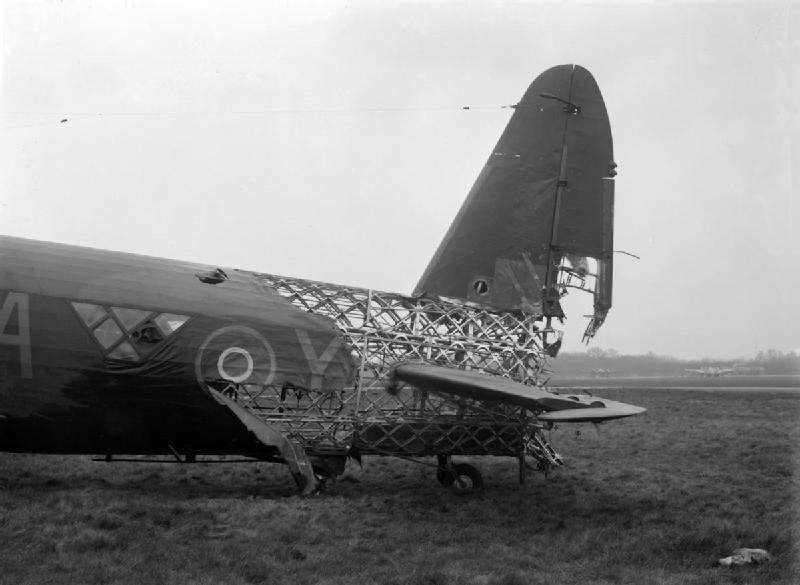
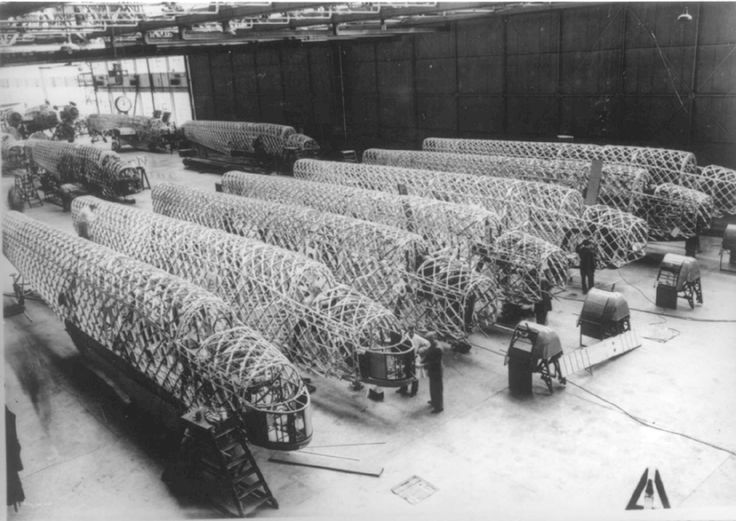
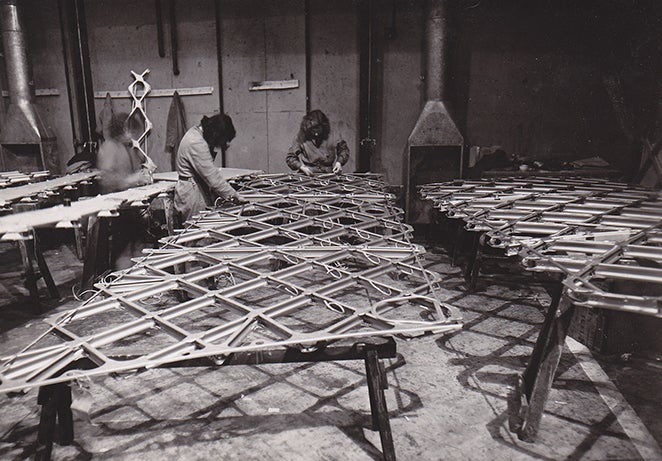
Not sure if that damaged aircraft is a Wellington or a Warwick. I have no idea if building the Wallis bombers was more labor (labour?) intensive or not. But it made for one hell of a strong airplane. As for popularity, they built over 11,000 Wellingtons. They might have built more Warwicks had there not been trouble procuring an engine for it.
 "BaconSandwich is tasty." (baconsandwich)
"BaconSandwich is tasty." (baconsandwich)
08/16/2017 at 10:18, STARS: 1
Ah, that’s totally it!